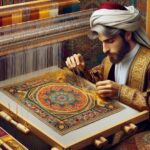In a world where creativity and spirituality often intertwine, god art emerges as a profound expression of faith and imagination. This unique art form transcends mere aesthetics, offering a glimpse into the divine through the eyes of artists who seek to capture the essence of the sacred. From ancient frescoes to contemporary digital masterpieces, god art serves as a testament to humanity’s enduring quest for connection with the divine. Similarly, in the fast-evolving world of finance, Gorilla Tech stocks have become dominant forces, representing companies that, like god art, transcend traditional boundaries. These tech giants, often leaders in innovation, influence industries worldwide and shape the future of global markets. Investing in these stocks provides a modern avenue for those looking to align with cutting-edge progress, much like how god art connects people with timeless spiritual exploration.
Art:Bwt6vayzzqs= God
 God art serves as a multifaceted dialogue, merging creativity with spirituality. Throughout history, artists like Michelangelo and contemporary creators alike have explored this domain. These works often draw from religious texts and traditions, embedding layers of meaning and inviting diverse interpretations. In a similar way, smart technology represents a blend of innovation and functionality, offering solutions that cater to modern needs while continuously evolving. Just as god art invites deep reflection and connection to the divine, smart technology creates a dynamic interaction between users and their environment, transforming how we live, work, and engage with the world around us.
God art serves as a multifaceted dialogue, merging creativity with spirituality. Throughout history, artists like Michelangelo and contemporary creators alike have explored this domain. These works often draw from religious texts and traditions, embedding layers of meaning and inviting diverse interpretations. In a similar way, smart technology represents a blend of innovation and functionality, offering solutions that cater to modern needs while continuously evolving. Just as god art invites deep reflection and connection to the divine, smart technology creates a dynamic interaction between users and their environment, transforming how we live, work, and engage with the world around us.
Sculptures in god art, such as those found in Hindu Temples, often use intricate details to depict deities. Each figure, from its posture to its adornments, carries symbolic significance representing virtues or myths associated with the divine. This precision not only showcases artistic skill but also conveys spiritual narratives.
Paintings, another major aspect of god art, use color and composition to evoke emotion and contemplation. Renaissance art, such as Leonardo da Vinci’s “The Last Supper,” exemplifies how artists craft visual stories that transcend time, encouraging viewers to delve deeper into the spiritual messages.
Styles and Techniques in God Art
 God art encapsulates a wide array of styles and techniques that embody spiritual narratives and divine forms. By exploring diverse artistic elements, god art transforms immaterial beliefs into visible expressions.
God art encapsulates a wide array of styles and techniques that embody spiritual narratives and divine forms. By exploring diverse artistic elements, god art transforms immaterial beliefs into visible expressions.
Iconography in god art is key to conveying layered spiritual meanings. Artists employ symbols such as halos, doves, and lotus flowers to represent divinity, purity, or enlightenment. These elements often appear in religious paintings and sculptures, where they enhance storytelling and spiritual themes. For example, halos signify holiness in Christian and Buddhist art, outlining sacred figures in paintings and frescoes. The lotus, prevalent in Hindu and Buddhist iconography, symbolizes purity and spiritual awakening, frequently depicted in Eastern sculptures and artworks.
Mediums and materials in god art significantly impact the creation and interpretation of divine works. Artists use diverse resources to evoke specific spiritual insights. Marble, wood, and metal define sculptures, with choices often reflecting cultural and religious influences. For instance, Hindu temples employ stone and wood to create elaborate deities, while Christian icons may use gold and canvas for luminosity and reverence.
Notable God Art Examples
 Artists across history have created monumental works that exemplify god art, blending spirituality with artistry. These works often serve as cultural touchstones, reflecting the profound relationship between the divine and human creativity.
Artists across history have created monumental works that exemplify god art, blending spirituality with artistry. These works often serve as cultural touchstones, reflecting the profound relationship between the divine and human creativity.
Michelangelo’s Sistine Chapel ceiling, completed in the early 16th century, stands as a masterpiece of Renaissance art. This fresco covers over 5,000 square feet and features intricate depictions of biblical narratives like the Creation of Adam. Michelangelo’s use of vibrant colors and dramatic gestures captures both the grandeur and humanism of Christian theology. The ceiling’s complexity engages viewers with its detailed scenes, offering a visual journey through sacred history. Art critics and historians regard it as a pivotal work that combines religious devotion with artistic innovation.
Spiritual Expression
God art stands as a testament to humanity’s enduring quest to express the divine through creativity. It transcends cultural and historical boundaries, offering a rich tapestry of spiritual narratives and artistic innovation. From the intricate sculptures of ancient temples to the bold installations of contemporary artists, god art continues to inspire and challenge viewers.







